Our Favorite Flowering Vines to Grow in Massachusetts
For anyone who loves flowers but doesn’t have a lot of space to plant them, there’s good news. You can grow flowering vines. Some of these plants are small and easy to grow, while others might need more patience. However, with so many options, you’re sure to find one that fits your needs. Here are our top 10 choices for the best flowering vines to grow in Massachusetts:
Morning Glory
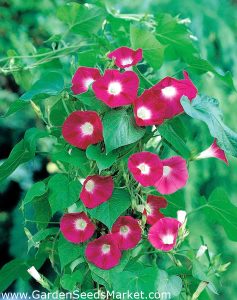
This vine is a fast-growing annual or perennial, depending on whether you’re starting from seed or seedlings. Morning glories grow best in full sun and need plenty of water to thrive.
If you’re starting from seed, soak your seeds overnight before planting them to ensure they are well-hydrated. Plant them at least six inches apart to ensure they germinate quickly, allowing for their expansive growth.
You’ll want to keep your morning glory plants in containers until they reach about three feet tall. At this point, you can transplant them into the ground if conditions are right for their growth. (they won’t survive winter temperatures below 50 degrees Fahrenheit).
If you’re starting with seedlings, transplant them as soon as you get them home and into a sunny spot where they’ll receive plenty of water. These plants also need lots of space to accommodate their rapid growth—about 12 inches apart should do.
Trumpet Vine
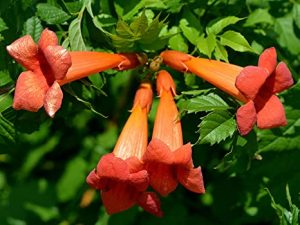
Trumpet vines are a great choice for Massachusetts, as they can grow in various environments and are tolerant of shade and sun. They’re also low-maintenance, making them an excellent choice for the novice gardener.
They have large, showy flowers that bloom in summer through fall. The flowers are often white or pink and resemble trumpets. It is common for these vines to grow on walls or fences, but they can also be grown on their own in the ground. They will often climb up trees if given a chance.
It can grow to be quite long—up to 50 feet long sometimes—so ensure you have enough space for them before planting one.
Trumpet vines can be grown outdoors in USDA zones 7b through 11 and indoors anywhere in the country. They need full sun and well-drained soil rich in organic matter and do best when planted near a building or fence where they can climb. The flowers will attract hummingbirds and butterflies while providing an excellent source of nectar for bees.
Scarlet Runner Bean

This is a great climbing vine for the warm months. It produces bright red flowers and grows up to 8 feet in height. This vine is well-suited for growing in hanging baskets and containers.
The Scarlet Runner Bean is hardy in zones 6 to 10 but can also be grown as an annual if you live in colder climates. It is a perennial vine that will bloom all summer long and produce beans that are great for cooking or eating fresh.
Ensure to plant this vine after all danger of frost has passed. A sandy loam or clay soil with plenty of organic matter added will keep moisture longer than regular sand. Or mud alone without any help from you, as they keep moisture longer on their own without any help from you. You can also add composting materials to last longer before drying out, as they do independently without help.
Skyline Honesuckle
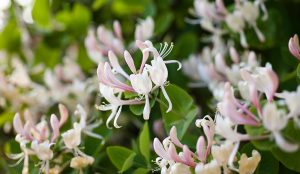
This vine is perfect for those who like to grow their plants, as it will grow up walls and trellises. It’s a good choice for gardeners in Massachusetts who want to add height to their garden, and the flowers are fragrant. You can also use this vine with other plants, such as hostas or ornamental grasses.
Skyline Honey Suckle is also known as Japanese honeysuckle (Lonicera japonica), and it blooms from June through September. It grows best in full sun or partial shade, but if you choose the latter, you’ll need to prune so that the plant doesn’t get too leggy.
It has beautiful, tubular flowers that are white in the center with pinkish-red petals around the edges. The flowers appear in late spring and summer. This vine produces sweet nectar that attracts hummingbirds, bees, and other pollinators. It’s also edible! The leaves are sometimes used in salads or sauteed as a vegetable.
Dutchman’s Pipe Vine
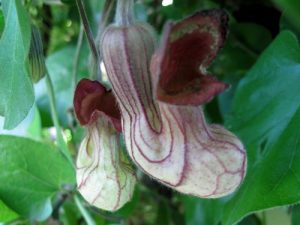
The Dutchman’s Pipe Vine has been growing in Massachusetts for a long time. It is a perennial vine that can grow up to twenty feet tall, with flowers that look like a pipe. The flowers are white and thrive on the vines’ ends. The leaves are long and narrow, and they have pointed tips. This plant produces seeds that birds and other animals spread.
It grows best in full sun but can also do well in partial shade. It needs moist soil that drains well and does not get too dry between watering sessions. This vine loves heat, so it does well in areas where summers are hot and humid; it can also be grown in cooler climates if you provide enough water for it (and lots of sunshine).
It is important to keep an eye on this vine because it can become invasive if you let it go unchecked—it will take over your garden. If you want to grow this vine yourself but don’t have much space, try planting it in pots instead of into your soil; this way, you won’t have to worry about its roots spreading out too far or taking over other parts of your yard or garden.
Carolina Jasmine

The Carolina Jasmine is an easy-to-grow vine that produces fragrant white flowers in the spring. In addition, this plant is drought tolerant, so it’s a great choice for Massachusetts, which can be quite dry in the summer months.
It grows well in full sun or partial shade and requires little maintenance. It has a long lifespan, at least 15 years, and can grow up to 20 feet tall if you let it.
It is a climbing vine with fragrant, trumpet-shaped blooms that are white. The leaves are heart-shaped and dark green. It can reach up to 20 feet in length. This vine can be grown as a groundcover or trained on a trellis or arbor. The Carolina Jasmine requires full sun and well-drained soil for the best growth. This plant may be hardy in zones 5 through 9.
Crossvine
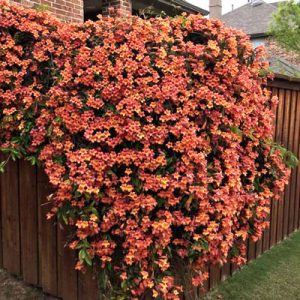
Crossvine is a fast-growing vine that’s great for beginners. It’s native to the southeastern United States and has a broad range of uses—from decorative to medicinal.
Crossvine grows, reaching a height of 12 and 15 feet within a year of planting, though it can grow as high as 25 feet if left untrimmed. It produces beautiful clusters of purple flowers in late spring and early summer (depending on location).
It can be grown as an annual or perennial—it will die back after frost but will come back each year from the roots. The flowers attract bees, butterflies, hummingbirds, and other pollinators who love visiting them. You can use crossvine in place of wisteria for its bright purple blooms; it also attracts hummingbirds and butterflies like wisteria do!
You can use crossvine in containers or along fences or walls—it’s also great for covering up areas such as chain-link fences or concrete walls that need some color.
Wisteria

The wisteria is a beautiful flowering plant that can grow in Massachusetts. It has fragrant clusters of blue, purple, or white flowers that are very fragrant. The flowers bloom in spring and summer, attracting bees and butterflies to the area where they grow.
It is easy to grow and can thrive in almost any type of soil as long as it is well-drained. This vine will tolerate partial shade despite its preference for full sun. It blooms best when it receives at least six hours of sunlight daily.
Wisteria vines climb, so they require a support structure compared to other types of plants that sprawl across the ground without a structure to climb on. They prefer to grow across the ground without being tied together nearby. For this purpose, you can use trellises, arbors, or fences, rather than having nothing within reach but the air around everywhere else, away from where they can attach themselves from one point to another.
Planting Tips
Here are some tips for getting them to survive and thrive:
• Choose a sunny location with well-drained soil. Flowering vines need the sun to grow; if it’s too shady, they’ll struggle to bloom.
• Not all vines are cold-hardy in Massachusetts, and some may need protection from the cold during winter. Check with your local nursery or online resources like the USDA Plant Hardiness Zone Map before choosing which types of vines you want in your yard.
• When planting flowering vines, dig holes deep enough so the roots can spread out without being constrained or damaged by rocks or other obstacles in the ground. If temperatures drop below freezing overnight during the winter, fill each gap with compost or potting soil and place plants inside them at an angle, so their bases are higher than their tops to ensure steady growth.
• Plant your vines in containers that have drainage holes at the bottom and can sit on a saucer. This will allow excess water to drain from the roots, which is important for your plant’s health.
• Water your plants and make sure they never go dry. You should also fertilize them once every two weeks with a balanced fertilizer like Miracle-Gro® Shake’ n Feed® Tomato & Vegetable Plant Food.
• For support as it grows, use a trellis or fence nearby to provide something to climb on.
• Keep your vine well-pruned so it doesn’t grow too large. Especially if you have berries or fruit on your vine, you will want them to be accessible.
Caring Tips
Flowering vines are beautiful additions to your garden, but they need special care. Here are some tips for keeping them healthy and thriving!
• Flowers need at least six hours of sunlight each day, so place them where they’ll get plenty of light year-round. Consider moving your flowering vine indoors or planting it somewhere else if it only gets sun from dawn to dusk during the summer.
• Water flowering vines every two days. Keep the soil moist by hand or with a sprinkler if you have the space.
• Keep your flowering vine healthy by fertilizing once per month with an all-purpose fertilizer. When the plant is overfed, it can suffer from leaf discoloration and other issues leading to poor growth and root damage.
Take Away: Flowering Vines Are a Colorful Addition to Any Garden
Some of these plants have fragrant flowers, while others are edible. They also attract butterflies and hummingbirds, which make them appealing to wildlife lovers. Many flowering vines can be grown on a trellis or fence. This helps you maximize your space by growing more plants in less land.
You’re now a flowering vine expert! Finally, you have all the knowledge you need to choose a vine that will bring joy and beauty to your garden. Use this guide as a starting point for your quest to find the perfect vine, and don’t be afraid to experiment with new varieties—it’s what makes gardening so much fun!

